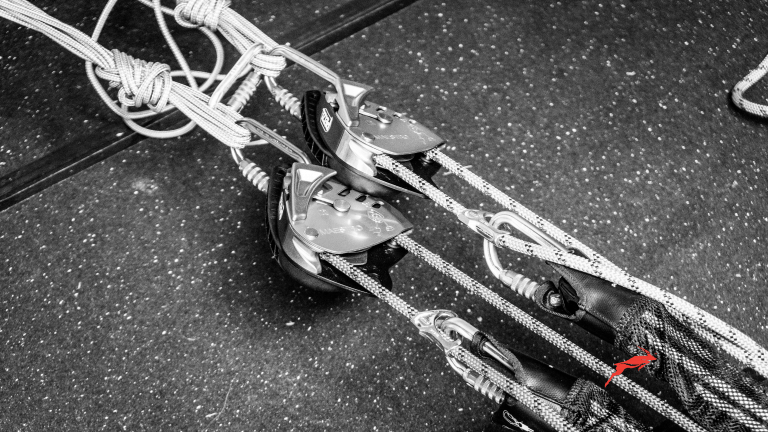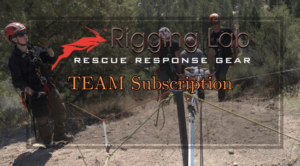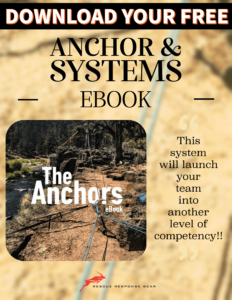Transitioning from Traditional Rescue Systems to Two-Tensioned Rescue Systems (TTRS)
Introduction
For decades, the traditional mainline-belay rescue system has been a cornerstone of rope rescue operations. It’s familiar, reliable, and deeply ingrained in training programs worldwide. However, as rescue demands evolve, so must the techniques. The Two-Tensioned Rescue System (TTRS) offers a modern, efficient alternative, emphasizing load-sharing and redundancy while streamlining operations.
This guide provides a step-by-step approach to help your team transition to TTRS, addressing common challenges and practical steps to ensure success.
Understanding the Core Differences
Traditional Mainline-Belay System
- Mainline Role: The mainline bears the entire load during operations.
- Belay Line: Acts as a safety backup, remaining slack until needed.
- Key Limitations: Uneven load distribution, potential for shock loads if the mainline fails, and additional setup complexity.
Two-Tensioned Rescue System (TTRS)
- Load Sharing: Both lines share the load equally, minimizing rope stretch and maximizing efficiency.
- Built-In Redundancy: Each line is capable of independently supporting the load, eliminating the need for a separate belay.
- Streamlined Operations: Simplifies transitions over edges and enhances control during hauling and lowering.
Transitioning from traditional systems to TTRS requires adapting both techniques and the mindset of your team.
Why Transition to TTRS?
TTRS reimagines how rescues can be performed more safely, efficiently, and effectively. By distributing the load evenly across two tensioned lines, TTRS introduces a new standard in redundancy and operational versatility.
1. Improved Safety
Traditional systems often keep the belay line slack until needed, introducing the risk of shock loads if the mainline fails. TTRS addresses this by maintaining equal tension on both lines, ensuring stability and redundancy within the system.
2. Enhanced Control
Tension management is critical during edge transitions and hauling scenarios. TTRS eliminates slack, enabling rescuers to predict and control the load more effectively. This leads to smoother operations and increased precision.
3. Faster Setup
TTRS simplifies configuration by reducing the number of components compared to traditional systems. Without a separate belay line, rescuers can set up more quickly and with fewer potential errors.
4. Operational Versatility
TTRS excels in a range of scenarios, including steep-angle recoveries and confined space operations. Its adaptability makes it an invaluable tool for handling complex rescue environments.
Addressing Common Challenges in Transitioning to TTRS
Transitioning to TTRS introduces unique advantages, but teams must overcome ingrained practices and adopt new techniques.
1. Misconceptions About Safety
Many rescuers associate a belay line with safety, so removing it can feel counterintuitive. Educating teams on TTRS’s built-in redundancy through equal load-sharing helps overcome this hesitation.
2. Conceptual Understanding
TTRS introduces concepts like mirrored tension management, which may initially seem complex. Clear explanations, visual aids, and live demonstrations demystify these techniques.
3. Lack of Hands-On Experience
Academic knowledge alone rarely translates to operational proficiency. Teams need immersive, hands-on training with scenarios that reinforce proper techniques and build confidence.
Practical Steps to Transition Your Team to TTRS
A structured approach is essential for successfully transitioning your team to TTRS:
1. Educate on TTRS Principles
- Focused Training Sessions: Use diagrams or videos to explain TTRS concepts, such as load-sharing and redundancy.
- Comparative Analysis: Demonstrate side-by-side setups of traditional systems and TTRS to highlight operational advantages.
2. Start with Basic Drills
- Flat Terrain Setup: Practice TTRS setups on level ground, focusing on anchor setup, rope routing, and equipment placement.
- Tension Management: Use progress capture devices like prusiks or MPDs to ensure equal tension across both lines.
3. Progress to Edge Transitions
- Edge Transition Drills: Train teams to manage tension collaboratively while transitioning a load over an edge.
- Collaborative Adjustments: Emphasize communication to maintain safety and control during these transitions.
4. Incorporate Real-World Scenarios
- Steep-Angle Rescues: Introduce scenarios with steep terrain to refine tension management skills.
- Confined Space Rescues: Simulate restricted environments to build adaptability and proficiency.
- Load Cells or Markers: Visual tools demonstrate proper load-sharing and reinforce key principles.
Recommended Equipment for TTRS
Equipping your team with the right tools ensures smooth operations, enhanced safety, and effective training. The following equipment categories are essential for implementing a Two-Tensioned Rescue System (TTRS):
1. High-Efficiency Pulleys
- Purpose: Reduce friction at critical points, optimize load-sharing, and ensure smoother operations during hauling and lowering tasks.
- Examples:
- Petzl Rescue Pulley: Known for its durability and efficiency, this pulley is ideal for heavy-duty rescue tasks.
- SMC Mini PMP: A compact, lightweight option that provides excellent efficiency without adding unnecessary bulk.
2. Progress Capture Devices (PCDs)
- Purpose: Maintain tension and control during hauling operations and ensure stable lowering with integrated progress capture.
- Examples:
- Petzl I’D: A versatile device that combines progress capture with controlled descent, making it a reliable choice for mirrored tension systems.
- CMC MPD: Combines a high-efficiency pulley and a progress capture mechanism, streamlining operations with fewer components.
- Petzl Maestro: Designed for heavy loads, the Maestro excels in hauling, lowering, and progress capture, offering smooth and predictable operation.
- CMC Clutch: A multipurpose device that supports hauling, lowering, and tension management with intuitive operation and rugged construction.
3. Anchor Straps
- Purpose: Provide secure and adaptable anchor points for rescue systems, accommodating various anchor types and scenarios.
- Features: Look for adjustable lengths and durable materials to ensure reliability and flexibility in diverse environments.
Streamlining Operations with the Right Gear
Each piece of equipment in a TTRS setup plays a critical role in optimizing safety, efficiency, and ease of use. High-efficiency pulleys reduce friction, progress capture devices provide control and stability, and anchor straps ensure flexibility in system setup. By equipping your team with these tools, you’re empowering them to operate confidently and master TTRS techniques effectively.
Conclusion
Transitioning to TTRS represents a transformative step forward in rope rescue operations. By focusing on structured training, hands-on practice, and proper equipment, you can guide your team through this change confidently. The benefits in safety, efficiency, and versatility make TTRS a vital asset for modern rescue scenarios.
Additional Resources
- TTRS Basics: Understanding Load Sharing
- Transition Drills for Rescue Teams
- Optimizing Equipment for TTRS
Peace on your Days
Lance










